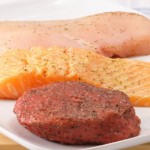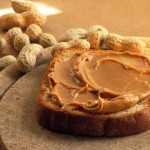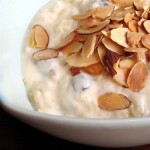Podcast 42: Will Immunity-Boosting Foods, Supplements and Super-dosing prevent COVID-19?
As we move through the rollercoaster ride of what’s been the last year and take
In the fitness and athletic field, protein consumption gets a big push. But why? What does protein do for our body, how does it break down and what different types of protein should we aim to include? Whether you’re an athlete or not, young or older, protein is an important part of the diet.
The protein you eat in your food digests through a number of processes into single amino acids. These amino acids are then used to help form all cells in your body. Protein is a major component of your skin, muscles, organs and glands. Protein is also a component of enzymes (substances needed in our body to help with digestion and allow important processes to occur), produce hormones, brain chemicals and produce antibodies (needed to maintain immunity). You need protein in your diet not only to maintain the structure of these bodily parts, but also to repair cells and make new ones. Knowing this, there are certain periods during life — childhood, adolescence and pregnancy — when protein plays an even bigger role, contributing to growth and development.
Protein comes from a number of different food sources: meat and poultry, fish and seafood, eggs, milk and cheese, tofu, nuts, seeds and beans, but also, grains and some  vegetables! The difference in the protein that these different food choices provide is whether the protein is complete (contains all essential amino acids) or incomplete (does not contain all essential amino acids). You may recall learning about amino acids at some point in your life. If you didn’t, here’s your little science lesson! As identified above, protein is known as the “building blocks of life”, with each protein component being made up of individual amino acids linked together. There are 21 known amino acids. Some of these amino acids cannot be made by our bodies (essential amino acids), and therefore, we need to ingest them through food sources. You do not need to eat a source of protein that contains all essential amino acids at one sitting however. Your body is able to make the essential amino acids through foodstuffs eaten throughout the day, provided the different essential amino acids are consumed. The remaining amino acids can be made by our bodies (non-essential amino acids), or by breaking down and reforming essential amino acids.
vegetables! The difference in the protein that these different food choices provide is whether the protein is complete (contains all essential amino acids) or incomplete (does not contain all essential amino acids). You may recall learning about amino acids at some point in your life. If you didn’t, here’s your little science lesson! As identified above, protein is known as the “building blocks of life”, with each protein component being made up of individual amino acids linked together. There are 21 known amino acids. Some of these amino acids cannot be made by our bodies (essential amino acids), and therefore, we need to ingest them through food sources. You do not need to eat a source of protein that contains all essential amino acids at one sitting however. Your body is able to make the essential amino acids through foodstuffs eaten throughout the day, provided the different essential amino acids are consumed. The remaining amino acids can be made by our bodies (non-essential amino acids), or by breaking down and reforming essential amino acids.
Animal sources of protein (includes meat and milk alternatives) are “complete proteins” meaning they contain all essential amino acids. When you eat these types of  food products, you are providing your body with the nine essential amino acids your body is unable to make. Vegetable and plant sources contain some or the essential amino acids, but not all, making them “incomplete proteins”. For instance if you eat peanuts, you will not get all essential amino acids, but if you consume peanut butter on whole grain bread, the two different food groups contain the different essential amino acids. This type of pairing is known as “complementary proteins”—it allows you to get the essential amino acids your body needs by pairing different food sources that are not complete. Beans and rice is another pairing (beans are low in the essential amino acid lysine, while rice is high in it). Common pairings include “grains and legumes” or “legumes and seeds and nuts” to get the complete amino acid profile. This type of pairing becomes a little more important for those individuals following a vegetarian diet, in order to make sure they give their body what it needs to repair and reproduce cells, and stay strong.
food products, you are providing your body with the nine essential amino acids your body is unable to make. Vegetable and plant sources contain some or the essential amino acids, but not all, making them “incomplete proteins”. For instance if you eat peanuts, you will not get all essential amino acids, but if you consume peanut butter on whole grain bread, the two different food groups contain the different essential amino acids. This type of pairing is known as “complementary proteins”—it allows you to get the essential amino acids your body needs by pairing different food sources that are not complete. Beans and rice is another pairing (beans are low in the essential amino acid lysine, while rice is high in it). Common pairings include “grains and legumes” or “legumes and seeds and nuts” to get the complete amino acid profile. This type of pairing becomes a little more important for those individuals following a vegetarian diet, in order to make sure they give their body what it needs to repair and reproduce cells, and stay strong.
So, if protein is such a large component of the human body, and needed especially more during periods of added stress (following a workout, sickness, illness and disease), why do we not need it in such large quantities as carbohydrate (45-55% of our daily calories) and fat (20-35% of our daily calories)? Protein is a much larger molecule, that when it breaks down (digests), although many of its components are utilized by the body, some are not, and have to be excreted through our urine. Your kidneys are the filtration system of your body, excreting wastes so that they do not build up in your body. If your kidneys are functioning optimally, they are able to help cleanse your body of these wastes. Drinking water throughout the day helps your kidneys excrete excess waste, but again, if your kidneys are not functioning optimally, you may need to watch your water AND protein consumption. It is always best to talk to your healthcare provider to find out how well your kidneys function at removing wastes and circulating fluids throughout your body.
How much do you need? 0.8-1.0 grams of protein per kilogram of body weight is the base needs for most individuals. Again, if you have any kidney issues, your healthcare provider may recommend amounts lower than this. For athletes (with a clean bill of health), and in order to perform best, the American Dietetic Association, Dietitians of Canada and American College of Sports Medicine recommends intakes of protein between 1.2 grams to 1.7 grams of protein per kilogram of body weight.1 Remember that one kilogram is equal to 2.2 pounds, so in order to compute how much you need, divide your weight in pounds by 2.2. A 130-pound athlete (59-kg) would look to consume between 71 and 100 grams of protein daily. Depending on your training program, and provided your kidneys are functioning optimally, your body may require up to 2.0 grams of protein per kg of body weight (in this example, up to about 120 grams of protein daily). Again, it is always best to check with you physician or a registered dietitian before adding extra protein to your diet.
As mentioned throughout the carbohydrate and fibre sections of this series, it is always good to track your diet for a few days to see how much you are consuming of the  macronutrients. Use the package labels when available or the Canadian Nutrient File as a great resource to Canada’s database to food nutrition information.2
macronutrients. Use the package labels when available or the Canadian Nutrient File as a great resource to Canada’s database to food nutrition information.2
Many athletes or active individuals trying to lose weight will sometimes restrict carbohydrate, and increase their protein consumption. While it is important to include an adequate source of protein in the diet, as research has shown that it promotes satiety at meals and snacks3, on top of all its other bodily functions, if you are a highly active individual, you need to ensure it is the carbohydrate that is primarily fueling your activity. If our bodies do not have enough carbohydrate to help keep us moving, the break-down systems will shift to begin breaking down protein into glucose (sugar) for energy. We have to remember that protein helps to build muscle, bone, skin, hair, teeth and repair tissue as its primary function. If our body reverts to breaking down protein for energy, it may not have adequate amounts to carry out the repair and maintenance processes it is needed for throughout the body. Additionally, there is added stress your kidneys take for having to work harder to rid your body of the breakdown products of protein which our body doesn’t require for energy. On a final note, protein and carbohydrate actually provide our bodies with the same amount of calories per gram eaten (4 calories/gram of carbohydrate or  protein). The problem is that sometimes people tend to over-consume carbohydrate. Take some time to identify what a portion is and what you typically consume to be able to continue eating a balanced diet within their respectable portion recommendations.4
protein). The problem is that sometimes people tend to over-consume carbohydrate. Take some time to identify what a portion is and what you typically consume to be able to continue eating a balanced diet within their respectable portion recommendations.4
Be smart about your protein choices! While some protein choices are more “complete”, make sure you keep variety in your diet so that you don’t get bored. Choosing hardboiled eggs, milk yogurt, nuts, nut butters and seeds along with leaner cuts of meat, fish seafood and poultry will help keep your body strong and keep your weight in check. Check in to see just how much protein you need on a daily basis, and how much you are consuming.
1http://www.sportsnutritionworkshop.com/Files/53.SPNT.pdf
2http://webprod3.hc-sc.gc.ca/cnf-fce/index-eng.jsp
3http://www.ajcn.org/content/82/1/1.full
4http://www.hc-sc.gc.ca/fn-an/food-guide-aliment/choose-choix/index-eng.php
As we move through the rollercoaster ride of what’s been the last year and take
The uncertainty of COVID-19 has impacted everyone differently, but from a food security perspective, many